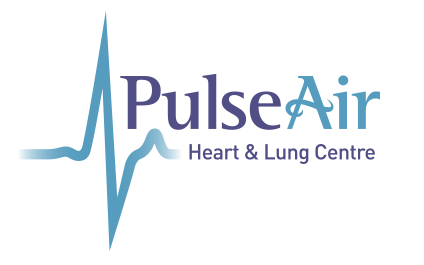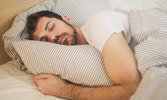If you think you have sleep apnea, consulting your doctor is a great first step. They will evaluate you based on the signs and symptoms you exhibit as well as your sleep history and will most likely refer you to a sleep apnea specialist such as PulseAir. From there, the sleep specialist will test you for sleep apnea. Sleep testing is one of the easiest ways to diagnose OSA and here’s why:
Sleep Testing Options
An in-lab or at-home sleep test can be performed to detect obstructive sleep apnea. Sleep tests are simple and pain-free. Learn more about the two options below (we offer both!).
Polysomnography – A laboratory-based study (known as polysomnography (PSG) or Level 1 sleep study) in which you sleep overnight in a laboratory-based setting.
- Once you arrive, the polysomnographic technologist will have you fill out the necessary paperwork and will go over what the sleep study entails
- During the sleep study, you’ll be connected to equipment that monitors your heart, lungs and brain activity, breathing patterns, blood oxygen levels and arm and leg movements
- The polysomnographic technologist will begin to monitor the data and will encourage you to sleep
- You may be monitored all night or part of the night in a split-night sleep study
- In the morning, you’ll be awakened by the technologist and the monitors will be removed
- The sleep center will send your results to your doctor or a sleep specialist for evaluation
- They will review the results as well as your medical and sleep history and make a diagnosis
That’s all it takes for a simple in-lab sleep study. At PulseAir, we provide a comprehensive approach to sleep disorder breathing. Our board-certified sleep physicians and respiratory therapists work toward diagnosis, education, and lifestyle so that you can have effective treatment.
At-Home Sleep Test – You may be eligible for an at-home sleep test. This is a portable sleep test that can be done within the comfort of your own bed and home to diagnose obstructive sleep apnea. This test typically measures your heart rate, oxygen levels, nasal airway pressure and snoring.
- You only need to sleep one night with the monitor on and you will put three to five sensors on your body before you start sleeping
- A qualified technician will set you up and show you how to use the monitor overnight in your home
- You will be given instructions and questionnaires to fill out to have a successful screen of your sleep disorder
- The information is downloaded the next day and sent to a sleep physician to be interpreted
- Those results will be sent to your doctor
At PulseAir, there is currently NO FEE to do a portable sleep study. We’re here to help you sleep better.
Schedule a Sleep Test with PulseAir
In addition to helping with the diagnosis through in-lab or at-home sleep testing, PulseAir offers comprehensive education and treatment for Obstructive Sleep Apnea (OSA). Visit our website to learn more about our home sleep tests and laboratory sleep tests or contact us if you have questions.


